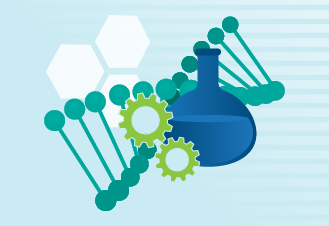
- Cross-border Data Analytics and R&D Collaboration. Cross-border data analytics can help speed the early identification of potentially useful drug candidates, shortening discovery timelines from years to months. The health data-sets and genomic data used in this analysis can come from multiple sources, such as clinical trials, data registries, and real-world evidence, but the required expertise, technology, and computer facilities often are not in the same country as where the data originates and, indeed, may be spread among many countries. Pharmaceutical R&D also depends on cross-border access to medical journals and scientific collaboration, reflected in a high degree of international co-authorship and new methods of sharing research and computing resources for cross-border R&D.
- Cross-border digitization of clinical processes. Cross-border data flows are essential to the conduct of clinical trials. Data flows are necessary to identify and establish clinical trial sites, identify clinical trial participants, and monitor the conduct of clinical trials. Cross-border data transfers also help companies address different countries’ drug regulatory approval requirements, and requirements of Independent Ethics Committees (IEC) and Institutional Review Boards (IRB). Cross-border digitization of clinical trial processes is also reflected in the growing prevalence of cloud-based clinical tools, including wearables, Internet of Things (IoT) devices, data exchange initiatives, and Regulatory Information Management Systems (RIMS) that support safety and efficacy reviews and regulatory compliance across multiple countries.
- Cross-border demographic representation. Cross-border studies are also critical to ensuring that new products are safe and effective across different demographics, populations, and regions. Cross-border cloud-enabled technologies can help improve patient access, diversity, and representation in clinical trials, given the importance of a sufficiently large and diverse population of participants. In addition, clinical trials for rare disease drug development are conducted in multiple countries to gather data from a sufficient number of qualified participants.
- Cross-border regulatory collaboration. Each country has their own national regulatory agency to ensure that a new medicine is safe and effective. Such agencies require clinical trial sponsors to provide the underlying clinical trial data so they can make their own assessments. As a result, even after the clinical trial data moves from the trial site to the clinical trial sponsor, it must also be able to flow to governments in whatever countries where the new medicine may be approved. Cross-border data transfers also help regulators do their jobs, as reflected in cross-border collaborative frameworks to share information in regulatory reviews among health authorities in different jurisdictions.
- Cross-border data transfers and good pharmacovigilance practice (GVP). Cross-border data transfers are also key to post-marketing surveillance of approved products. This often includes cross-border reporting of data on adverse reactions with global regulators; virtual inspections of global manufacturing facilities; and submission of post-authorization safety studies in different countries.

